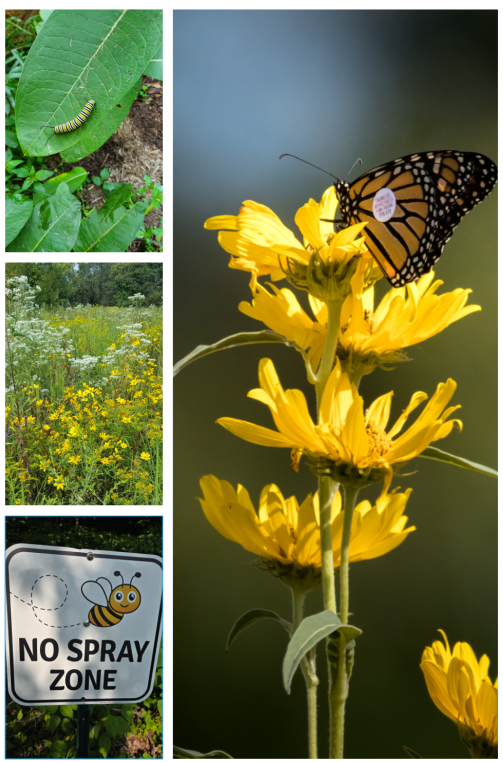Monarchs are one of the world’s most loved butterflies—not only for their beauty and grace, but for their astonishing ability to migrate more than 3,000 miles to overwinter in Mexico.
Summer generations of Monarchs live 3–5 weeks, and fall generations live up to 8 months. The migratory generation travels from southern Canada to central Mexico to survive the winter and return to the U.S. to lay eggs on milkweed. In most migratory species, members of one generation complete the yearly migration. Monarchs perform a generational migration with different generations responsible for different legs of the trip. They arrive at the wintering ground en masse and can reach densities of four million butterflies per acre.

How We Support Monarchs
Chesapeake Wildlife Heritage has been establishing habitat for Monarchs and many other critters since 1980:
* Restoring wetlands
* Planting native meadows
* Managing land without insecticides
These proven practices create safe, nourishing spaces for Monarchs to breed, feed, and migrate.
Tagging & Tracking Monarchs
In 1999, we began tagging migrating Monarchs and have been keeping data on population trends as part of a larger study conducted by the University of Kansas. Since we started tracking Monarch populations, they have declined by 80 %. This hints at extinction in parts of the Monarch range.
Milkweed Matters
The Monarch host plant is milkweed, Asclepias species. The Monarch caterpillar can only survive eating milkweed leaves.
There are several native milkweeds on the Eastern Shore. The most common milkweeds are:
* Common Milkweed (Asclepias syriaca),
* Swamp milkweed (Asclepias incarnata)
* Butterfly weed (Asclepias tuberosa)
Avoid planting non-native plants, like tropical milkweed, which can be harmful to monarchs. It causes illness from a parasite called Ophryocystis elektroscirrha (OE) and disrupts their migration.
How You Can Help
Plant native flowering plants in early spring to late fall that will provide nectar throughout the season and keep the Monarchs fed for migration. This is very important for adult Monarchs. Consider planting a native meadow or butterfly garden.
Also remember that all wildlife needs the food and cover that unmown meadows provide to survive. Mowing meadows during the growing season jeopardizes Monarchs and a host of other wildlife, so delay your mowing until at least Thanksgiving. Mowing before a hard frost destroys blooms and deprives a diversity of bees and butterflies—such as migrating Monarchs—of the pollen and nectar they need to complete their lifecycle.
By providing a little habitat for Monarchs on your property, you can help these amazing creatures complete their miraculous journey.

You must be logged in to post a comment.